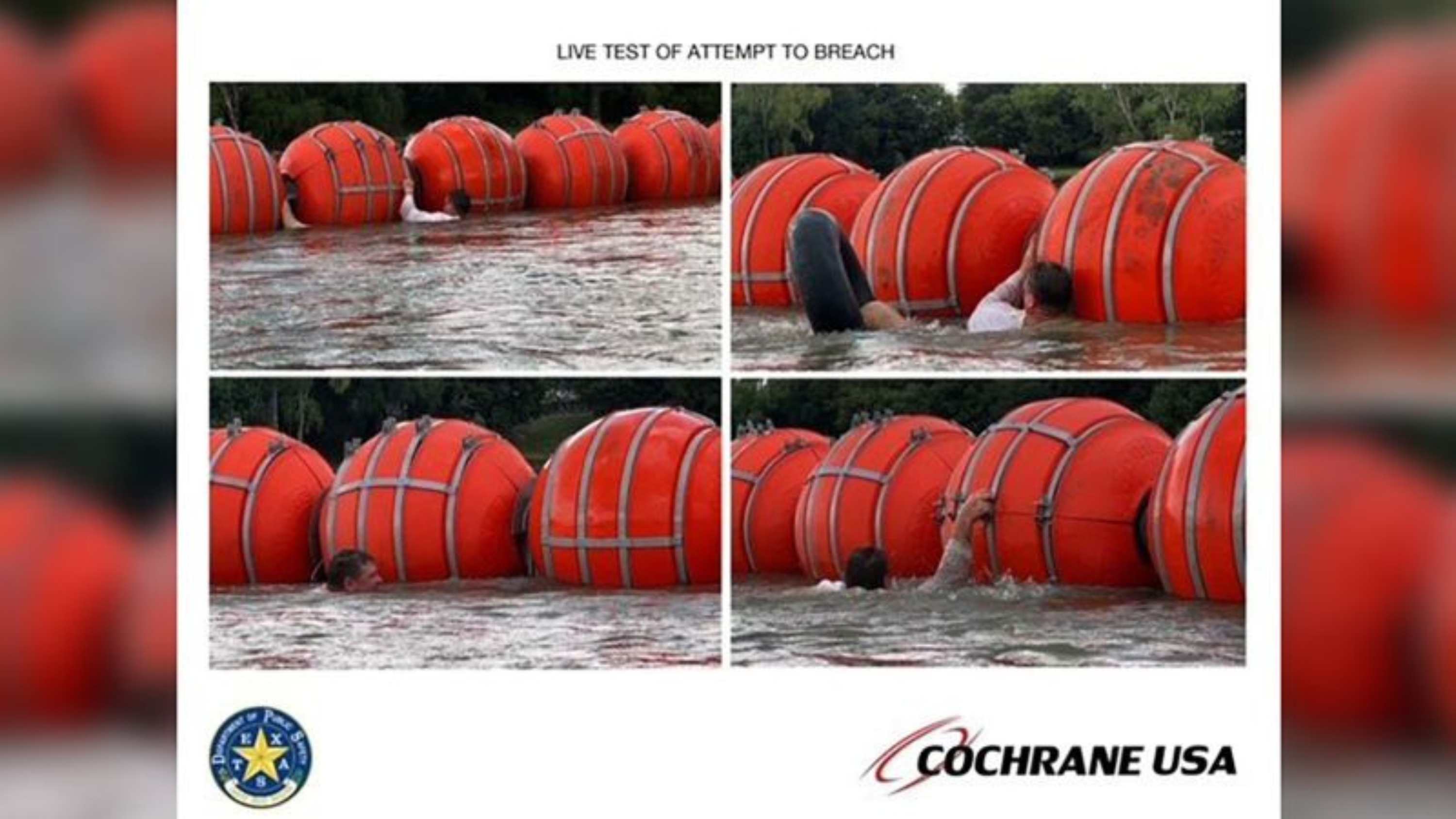(CNN) — Texas Governor Greg Abbott announced plans Thursday to deploy a floating sea barrier along the Rio Grande River to prevent illegal border crossings between the United States and Mexico.
The announcement came during a bill signing in Austin, Texas.
Abbott, a longtime critic of the Biden administration’s border policies, has said he wants to float the first 1,000-foot barrier on the river near the Maverick County town of Eagle Pass. In 2022, a Texas National Guardsman drowned in the Rio Grande while trying to rescue a woman crossing the river.
“This is a new barrier (…) we can put kilometer after kilometer for these buoys,” the governor said while showing an explanation of the buoy barrier. “What we are doing now is protecting the border at the border and what these floats will allow us to do is prevent people from reaching the border,” he added.
Texas Gov. Greg Abbott speaks next to a diagram of planned dams on the Rio Grande River in Austin on June 08, 2023 (Brandon Bell/Getty Images)
Texas Gov. Greg Abbott speaks next to a diagram of planned dams on the Rio Grande River in Austin on June 08, 2023 (Brandon Bell/Getty Images)
Director of the Texas Department of Public Safety, Col. Steven McGraw, who attended the event, said the floating barrier can be “quickly deployed” and moved because it is mobile.
Explaining the idea, McGraw said the floating buoy barrier is something the U.S. Border Patrol has designed and tested.
“We don’t want anybody to get hurt,” McGraw said. “We really want to prevent people from getting hurt and drowning in a proactive way.”
McGraw said the floating barrier would be a deterrent to prevent migrants from entering the Rio Grande.
“The important thing is that the governor was concerned about the loss of life, whether it would endanger the migrants, the family units, and the answer is, every time they go into the water, it’s a danger. The migrants,” McGraw said.
He acknowledged that there are “ways to get around” the floating barrier, but “it requires a lot of effort, special skills and equipment.”
This is what floating barriers look like on the Rio Grande. (Credit: Texas Department of Public Safety)
McGraw explained that the float would be anchored to the bottom of the waterway. He said the floats were approximately 1.2 to two meters high, depending on the water level.
He said the cost of the first deployment was less than a million dollars.
David Donati, an attorney for the ACLU of Texas, responded to the plan, saying, “The chain of floats along the Rio Grande is the latest in a series of gifts from the state to private contractors to fuel the governor’s fabricated crisis at the border. Floating floats do not address the real and important reasons people come to America. The floats are a blight on Texas’ moral conscience. is.”
McGraw said the initial deployment date is July 7.

“Music ninja. Analyst. Typical coffee lover. Travel evangelist. Proud explorer.”

:quality(85)/cloudfront-us-east-1.images.arcpublishing.com/infobae/TEQF6EONZRFGLLLDIDD4L2O4EE.jpg)

:quality(75)/cloudfront-us-east-1.images.arcpublishing.com/elcomercio/XU32LRAEZFDDPNVHLFU3CKVBYY.jpg)



More Stories
Earthquake in the US today, Wednesday, May 29 – Earthquake’s exact time, magnitude and location via USGS | USGS | composition
President Arrivalo is left with no alternatives to dismissing the Attorney General
Passenger dies after jumping off world’s largest cruise ship in Florida